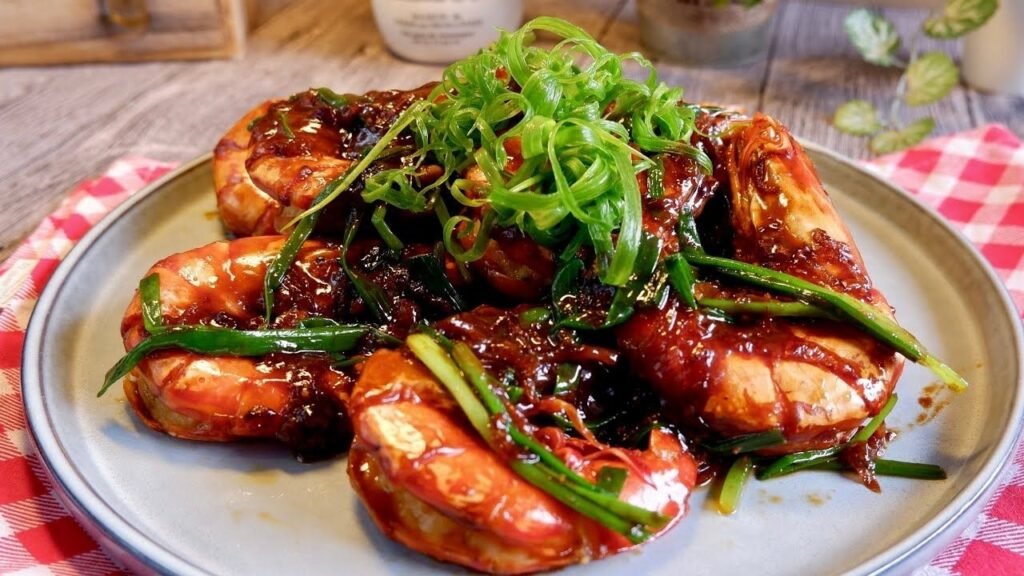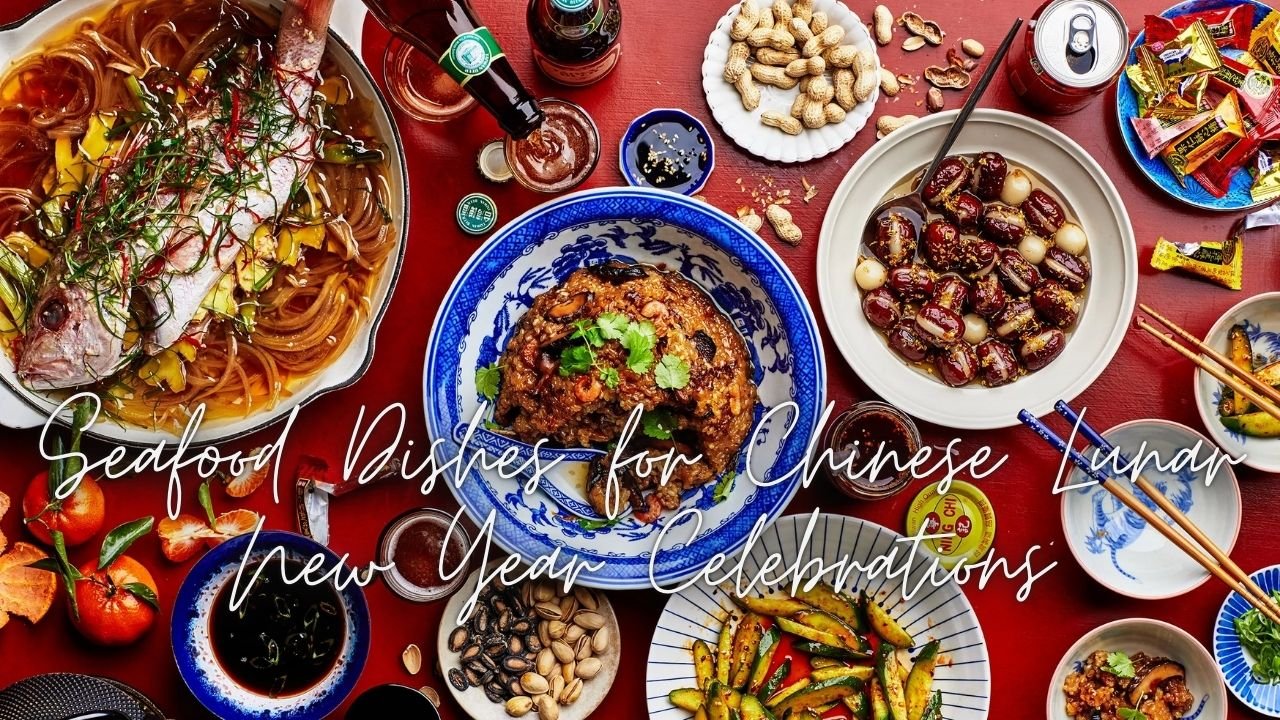The Chinese Lunar New Year is a time of reunion, birthday celebration, and indulging in scrumptious food. Central to the festivities are seafood dishes, which characterize abundance, prosperity, and good fortune for the year in advance. Families collect around the table, sharing these cautiously organized cuisine whilst exchanging desires for health, wealth, and happiness. Here’s a manual to the must-attempt seafood dishes for Chinese Lunar New Year which can be as meaningful as they’re delicious.
1. Steamed Whole Fish
Steamed complete fish is one of the maximum vital dishes at the Lunar New Year table. In Chinese subculture, fish represents surplus and prosperity, because it sounds similar to “abundance.”
- Preparation: The fish is normally seasoned in reality with ginger, scallions, and soy sauce to spotlight its herbal taste. Some families add a splash of Shaoxing wine or a drizzle of sesame oil for depth.
- Symbolism: Serving the fish whole—with head and tail intact—represents an amazing starting and quit for the approaching year. It’s traditionally not completed completely to symbolize that abundance will carry over into the next year.
2. Lobster with Ginger and Scallion
Lobster is a high priced seafood preference that symbolizes wealth and happiness. Its vibrant pink shell aligns perfectly with the festive color scheme of the Lunar New Year.
- Preparation: Lobster can be stir-fried with ginger and scallions, lightly pro with soy sauce and Shaoxing wine. Some cooks serve it baked or steamed with garlic butter for a richer taste.
- Symbolism: The lobster’s claw shape is harking back to the Chinese character for “wealth,” making it a famous desire for auspicious celebrations.
3. Prawns or Shrimp
Prawns and shrimp are a should-have on Lunar New Year tables because of their playful and absolutely glad symbolism. The phrase for shrimp in Mandarin looks like laughter, representing happiness and cheer.
- Preparation: Prawns are often stir-fried with garlic and ginger or cooked with chili and black bean sauce. For a lighter model, steamed prawns with soy and sesame oil are served to attention on their herbal sweetness.
- Symbolism: Serving shrimp throughout New Year symbolizes a year packed with laughter and good spirits.

4. Abalone
Abalone is taken into consideration a delicacy fit for royalty and is relatively prized in Chinese delicacies. Its rich texture and umami flavor make it an elegant addition to the festive desk.
- Preparation: Abalone may be braised in oyster sauce or simmered slowly with chicken broth to decorate its natural flavors. It’s frequently served atop greens or rice noodles for a visually superb presentation.
- Symbolism: Abalone represents wealth, prosperity, and achievement, making it an important luxurious ingredient for those trying to start the year on a high notice.
5. Sea Cucumber
Sea cucumber is a completely unique element that is particularly valued in Chinese delicacies for its dietary benefits and symbolic that means.
- Preparation: Sea cucumbers are frequently braised with mushrooms, bamboo shoots, and oyster sauce. They require careful rehydration and gradual cooking to obtain the right tender texture.
- Symbolism: Sea cucumber symbolizes durability and top fitness, making it a considerate addition to New Year feasts, in particular for elders.
6. Scallops
Scallops are candy, smooth, and stylish, making them a favorite for festive activities. Their presentation in shells offers visual enchantment to the dining desk.
- Preparation: Scallops may be steamed with garlic and vermicelli or gently stir-fried with soy sauce and spring onions. Some chefs bake scallops with a topping of cheese or butter for a current twist.
- Symbolism: Scallops constitute wealth and achievement, and their golden color on the identical time as cooked resonates with the subjects of prosperity and abundance.
7. Fish Maw Soup
Fish maw, the dried swim bladder of fish, is considered a pricey and nourishing element in Chinese delicacies.
- Preparation: Fish maw is commonly soaked after which simmered in bird or seafood broth with Chinese herbs, mushrooms, and on occasion crab meat. The ensuing soup is gelatinous, rich, and flavorful.
- Symbolism: Fish maw symbolizes wealth, suitable fortune, and durability, making it a super dish for the New Year’s Eve dinner.
8. Crab
Crab is a seasonal delicacy that provides range and visible flair to Lunar New Year meals. Its claws and frame are frequently loved throughout feasts.
- Preparation: Crabs may be steamed with ginger and rice wine or stir-fried with garlic and chili. Chilli crab-fashion arrangements are famous in regions stimulated with the aid of Southeast Asian cuisine.
- Symbolism: Crab symbolizes prosperity and achievement, because the word for crab in a few dialects sounds similar to “harmony” or “wealth.”
9. Sweet and Sour Fish Balls
Fish balls are a popular addition to the New Year desk, mainly in Southern Chinese families.
- Preparation: Fish paste is shaped into balls and cooked in a candy and sour sauce or broth. They also can be deep-fried for a crispier texture.
- Symbolism: Fish balls constitute own family cohesion and togetherness, as they may be spherical and symbolize wholeness, ideal for a festive reunion meal.
Conclusion
Seafood plays a applicable role in Chinese Lunar New Year celebrations, no longer best for its scrumptious flavors however also for its auspicious symbolism. Dishes like steamed whole fish, lobster, prawns, and abalone encompass prosperity, wealth, and happiness, while ingredients like sea cucumber and fish maw sell fitness and toughness. Incorporating the ones seafood dishes into your New Year celebrations is a manner to honor way of life, provoke your traffic, and welcome the approaching year with abundance, joy, and good fortune.
